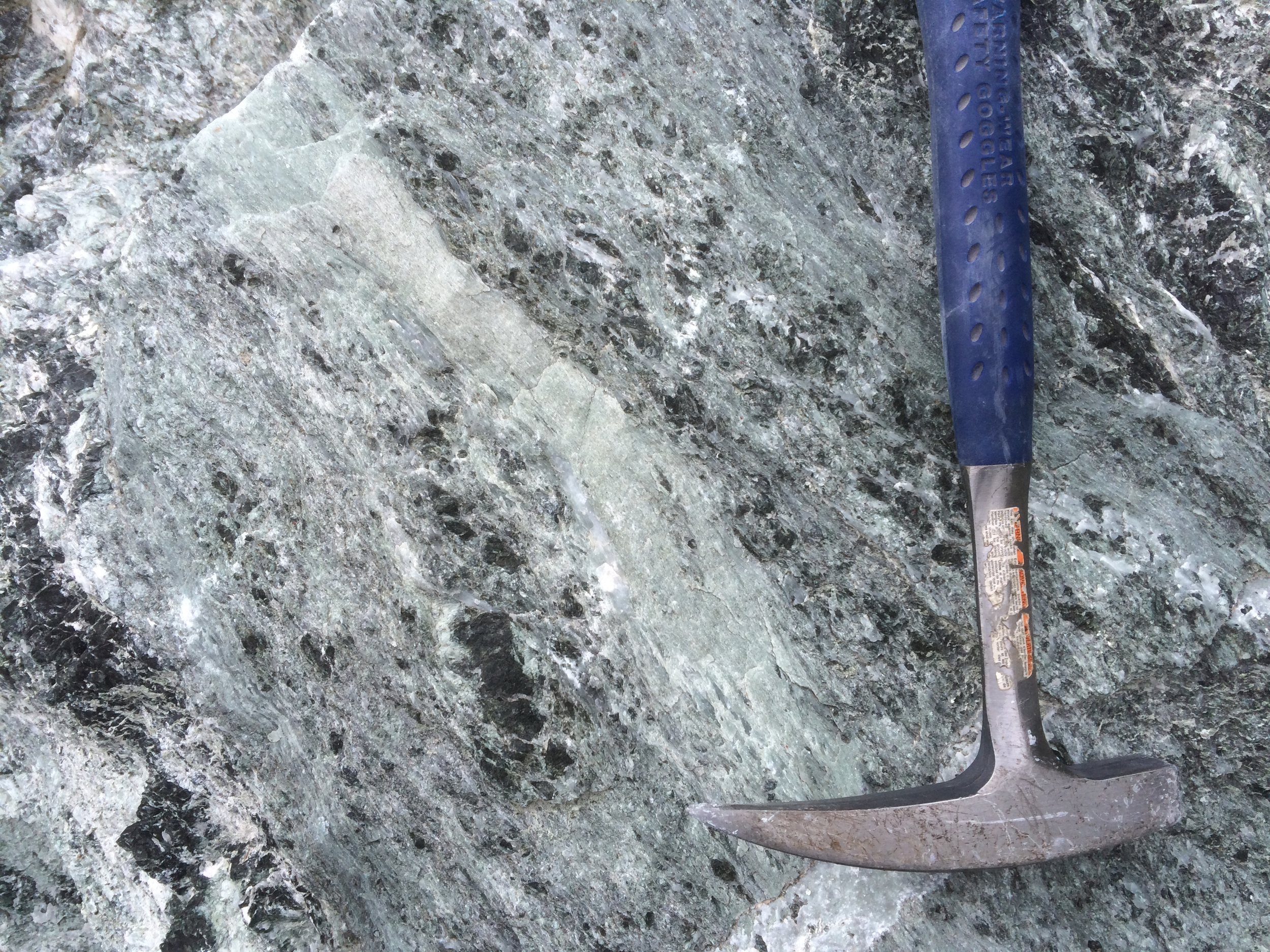Tectonics of the Northern Sierra Nevada and Klamath Mountains, California
While the Sierra Nevada is most famous for its Cretaceous batholith, the metamorphic host rock for these granitoids preserves a 300-million year tectonic history involving the production of oceanic crust, initiation of subduction zones, growth of island arcs, closure of ocean basins, and accretion of far-travelled microcontinents. These Paleozoic and Mesozoic metamorphic belts are particularly well exposed in the Northern Sierra Nevada and Klamath Mountains where they were destroyed by intrusion of the batholith.
My group tries to understand the history of these metamorphic belts through a combination of field observations, petrography, mineral thermobarometry, geochemistry, and geochronology. Currently, we are involved in an effort to understand the origin of the high-temperature (amphibolite and eclogite) rocks preserved at the base of Triassic-Jurassic and Devonian ophiolites. These preserve transient heating events that may have formed at the initiation of subduction or due to subduction of oceanic ridges.
Current MS students:
Erica Sanborn, Origin of metamorphic sole recorded in high-pressure, high-temperature rocks at Jarbo Gap, Central Belt, Sierra Nevada
Rick Savage, Structure of deformed ocean-plate stratigraphy exposed at Auburn Dam, Central Belt, Sierra Nevada
Previous MS theses:
Jo Black, 2021, Record of Triassic subduction initiation preserved in garnet amphibolite of the Tuolumne Ophiolite
David Hart, 2019, Structure and geochemistry of the Precambrian plagiogranite in the Ordovician Trinity Ophiolite, Klamath Mountains, California
Previous BS projects:
Sierra Rack, High-pressure, high-temperature mafic amphibolite of the Central Belt of the Sierra Nevada Mountains near Colfax, California
Also see:
Tectonics of the San Andreas Fault Zone, California
The San Andreas Fault System has transported fragments of the Southern Sierra Nevada northward. My group works on 1) reconstructing these fragments back to their original location in the Southern Sierra Nevada and 2) inversion of Monterey Formation basins caused by stepover migration.
Previous MS theses:
Theron Sowers, 2022, Thermal evolution of northern Salinia using apatite and zircon (U-Th)/He thermochronology
Tectonics of Calabria, Southern Italy
Calabria, the toe of Italy, preserves a unique record of Hercynian, Tethyan, and Alpine tectonics. My group works on several aspects of this deformation.
In the aftermath of the Hercynian Orogeny--the European equivalent to the Alleghenian Orogeny--a large amount of post-orogenic magmatism affected the rock record. Several hypotheses have been presented, including post-orogenic collapse, lithospheric delamination, and strike-slip faulting. Our group is working on understanding what tectonic process may have occurred and whether the upper mantle and lower crust section exposed in Calabria may contain unique evidence of this process.
Unlike classic Penrose-type ophiolitic sequences, ophiolite fragments accreted in the Apennines and Alps appear to represent pieces of Tethyan hyperextended margins. These can be recognized in the field by exposures of volcanic and oceanic sedimentary sequences that are separated from high-temperature gabbroic mylonites and serpentinite by low-angle detachment faults. These zones may also be locations prone to subduction initiation beneath continental margins. My group uses field mapping, geochemistry, and geochronology to understand the history of these unusual pieces of crust.
The transition between Tethyan rifting and Alpine/Apenninic convergence requires the development of a subduction zone beneath the European margin. When and how this subduction zone initiates is an open question in Western Mediterranean tectonics. Furthermore, the effects of subduction initiation on the regional geology are poorly understood. We have used field mapping, geochronology, and modeling to understand these processes.
Also see:
Shimabukuro, D.H. and Battistella, C., 2022, Ligurian hyperextended continental margin preserved in an ophiolitic block at Timpa di Pietrasasso, Calabrian Arc, southern Italy (send email for copy)





